Exploring the Depths of Berserk Art and Its Impact
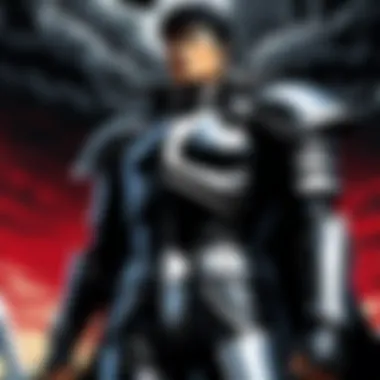
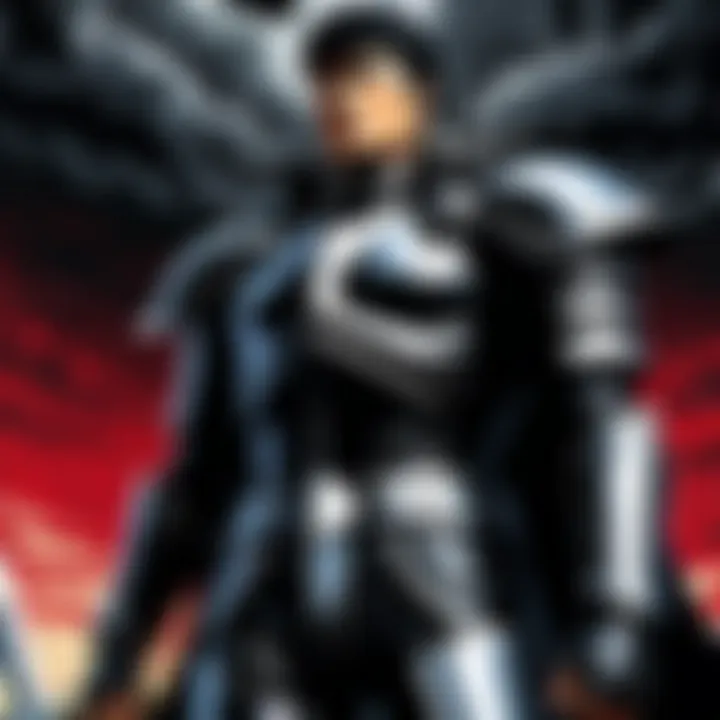
Intro
The world of Berserk art is not just a visual feast; it’s a profound reflection of the human experience that intertwines darkness with beauty. This section sets the stage for an intricate examination of character designs, thematic elements, and the artistic techniques that make this specific genre of anime and manga so compelling. It beckons to fans and new audiences alike, encouraging them to delve deeper into its emotional landscape.
Berserk transcends mere storytelling by embedding rich narratives within each stroke of the brush. At its core, it challenges conventions and dares to explore the raw edges of humanity, often through a lens that many would consider unsettling. Yet therein lies its power: the ability to connect on an emotional level that few pieces of art can achieve.
To illuminate the depths of Berserk art, we begin with the characters that breathe life into these stories. The design, complexity, and evolution of each character offer a window into the themes that resonate throughout this universe.
Character Profiles
Overview of Main Characters
In the realm of Berserk, few figures stand out like Guts, the Black Swordsman. Guts is not merely a warrior; he embodies the struggle against fate and despair. His design, with that massive sword known as the Dragon Slayer, is striking and indicative of his burden. He is a testament to resilience amid chaos, a character whose scars tell tales of battle, both external and internal.
Another key character, Griffith, serves as the dark foil to Guts. Charismatic and ambitious, Griffith's character arc reflects the seductive pull of power and sacrifice. His transformation holds a mirror to the theme of ambition and its associated costs. The duality between Guts and Griffith further highlights the narrative complexity, giving the audience a rich tapestry of conflicting motivations.
Supporting Characters
Also within this grim universe, characters like Casca and Puck add layers to the storytelling. Casca, with her blend of strength and vulnerability, navigates her own path through trauma and love, capturing the struggles faced by many. Puck, on the other hand, provides a contrast with his more whimsical demeanor, cleverly balancing the heavy themes around him. Each supporting character enhances the narrative depth, creating a vivid world teeming with emotional resonance.
Theme Exploration
Central Themes
The central themes of Berserk delve into existential dread, the nature of good and evil, and the concept of free will. Through Guts' journey, the struggle against insurmountable odds becomes a cornerstone of the narrative. The relentless march of fate, embodied by entities like the God Hand, binds the characters in a tapestry of conflict and desire.
Moreover, the exploration of trauma—both physical and psychological—is meticulously portrayed. The art illustrates these experiences in a raw, often unflinching manner, allowing viewers to engage with these subject matters on a deeply personal level.
Cultural References
Embedded within Berserk are cultural motifs that resonate with Japanese and international audiences alike. The narrative’s foundations come from a blend of Gothic literature, Norse mythology, and historical context. Such references enrich the storytelling, providing layers that invite analysis and discussion.
"Berserk’s art isn’t just to be viewed; it’s an experience that engages the intellect and emotions just as much as it appeals to the senses."
Popular Series and Recommendations
Top Anime Series of the Year
For enthusiasts seeking similar dark narratives, series like Vinland Saga and Attack on Titan convey powerful reflections on human resilience against overwhelming adversities. Each series, while distinct, taps into themes of survival, loss, and the moral gray areas of humanity.
Hidden Gems in Manga
In the manga realm, titles such as Homunculus and Tokyo Ghoul offer haunting explorations of the human psyche. These stories, paralleling Berserk’s thematic depth, provide a rewarding experience for those willing to explore the darker recesses of the genre.
As we navigate through the intricacies of Berserk art, the exploration continues to unfold, revealing layers of emotion and cultural significance that truly define this art form. This journey not only deepens appreciation for the craft but also enriches our understanding of storytelling as a reflection of our own complexities.
Understanding Berserk Art
In the realm of visual storytelling, Berserk art holds a uniquely prominent space, characterized by its rich narrative depth and stark thematic explorations. Understanding this art form is paramount for enthusiasts of anime and manga, as it not only showcases the technical prowess of its creators but also reflects deep emotional and philosophical currents that resonate with viewers. The significance of Berserk art lies in how it navigates complex themes like despair, struggle, and redemption, inviting audiences to engage with the material on both visceral and intellectual levels.
Defining Berserk Art
When we talk about Berserk art, we delve into a distinct style originated from Kentaro Miura's acclaimed manga. This art is not merely about visuals; it's a storytelling device rich with symbolism and meaning. Artists like Miura skillfully blend elements of realism with fantasy, creating characters and worlds that feel both otherworldly and strikingly relatable.
One defining aspect is the use of intricate line work that conveys emotion and urgency. Characters are designed with great attention to their psychological states, often mirroring the chaos and brutality of their surroundings. This allows the viewer to feel, in a sense, the weight of their struggles, amplifying the narrative through visual representation.
Historical Context
The inception of Berserk in the late 1980s can be linked to Japan’s cultural atmosphere at that time, which saw a surge in darker narratives within manga and anime. Influenced by a mix of traditional Japanese storytelling and Western literary themes, Kentaro Miura created a universe where the characters are beset by turmoil and existential dread.
During this era, society was grappling with various challenges, including economic uncertainties and shifts in cultural norms. Berserk art reflects these struggles by presenting a world where light and dark constantly vie for dominance. Characters often face moral dilemmas that question the essence of humanity itself, making it not just a story about swords and battles, but an exploration of the human psyche amidst chaos.
"Berserk takes its audience deep into the shadows, illuminating the complex nature of good, evil, and everything in between."
As the narrative progressed, it became clear that Berserk challenged not only its characters but also its readers to confront their own notions of morality and existence, ensuring its place not just as a manga series, but as a vital piece of cultural commentary. In sum, Understanding Berserk art entails appreciating its dual role: as entertainment and as a mirror reflecting our deepest fears and aspirations.
Thematic Elements of Berserk Art
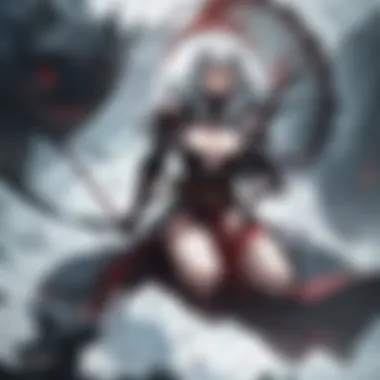
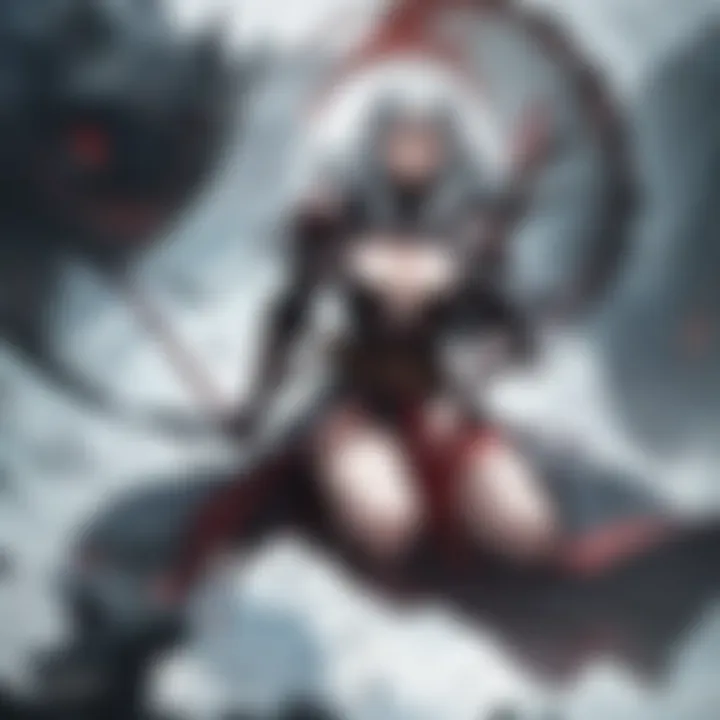
The thematic elements of Berserk art weave a complex tapestry that speaks directly to the human experience. Every stroke of the brush and every panel of the frame carries weight and meaning, reflecting both the struggles faced by the characters and the universal emotions they evoke in the audience. This section aims to unpack these themes, highlighting how they contribute not only to the narrative but also to the overall aesthetic resonance of the series. Understanding these elements is crucial for any aficionado of anime and manga, as they unlock the deeper layers of storytelling and emotional engagement that define Berserk art.
Exploration of Darkness and Despair
At the heart of Berserk art lies an exploration of darkness and despair, a theme that is both pervasive and profound. Characters are frequently seen grappling with their inner demons and external challenges that often seem insurmountable. Take Guts, the protagonist, for instance: his journey is a haunting depiction of isolation and trauma. The visuals often evoke a sense of hopelessness, enhancing the narrative’s emotional depth.
Through the meticulous use of shadow and contrast, the artwork brings the bleakness of this world to life. The darkness is not merely an aesthetic choice—it's a lens through which the audience can explore complex emotional landscapes, urging viewers to confront their own struggles with despair. The stark imagery captures not only the character's feelings but also resonates with the audience's own experiences, making these moments feel visceral and relatable.
The Struggle for Humanity
The struggle for humanity, amidst chaos and brutality, is another fundamental theme present in Berserk art. Characters are often faced with moral dilemmas that force them to examine what it means to be human. This conflict is starkly illustrated in the character of Griffith, whose rise to power is marred by betrayal and sacrifice.
In scenes where characters confront their own vulnerabilities, the artwork becomes almost a mirror—reflecting the audience’s doubts and fears about their own moral choices. The dynamic line work emphasizes the tension in these moments, showcasing the characters’ desperation and resilience alike. By bringing this human struggle to the forefront, Berserk art transcends traditional narrative boundaries, allowing viewers to ponder deeply philosophical questions of existence and morality.
Imagery of Violence and Redemption
Imagery in Berserk often juxtaposes violence with redemption, crafting a poignant narrative about the cyclical nature of conflict. Brutality is depicted vividly, making it impossible to look away, yet buried within this violence are seeds of hope and potential for redemption. Guts’ relentless battles are not merely depictions of bloodshed; rather, they symbolize a quest for solace in a chaotic world. His journey underscores the idea that through suffering, personal growth and forgiveness can emerge. This duality is palpable in several key scenes, where the stark, detailed depictions of fight sequences are interspersed with quieter, more reflective moments. These contrasts serve to highlight the emotional stakes of the story. Ultimately, the imagery of violence and redemption not only challenges the audience to reflect on the darker sides of humanity but also inspires them to seek light in the depths of despair.
In Berserk, the art doesn't just tell a story; it forces us to confront the shadows within ourselves while also reminding us of our capacity for redemption.
Character Design in Berserk Art
Character design in Berserk serves as a cornerstone of its storytelling, bringing life to characters that are as complex as the story itself. The visual representation of these characters not only shapes their identities but also explores deeper themes like existential struggles and morality. It offers a unique lens through which readers and viewers can engage with the emotional weight of the narrative.
At the core of Berserk’s character design is the meticulous detail that goes into each character’s appearance and backstory. An example of this can be seen in the protagonist, Guts. His towering stature and battle-worn armor are not just superficial traits; they symbolize the heavy burdens he carries, both literally and metaphorically. The scars etched upon his body echo the violence he has endured throughout his journey. Each crease and dent in his armor tells a story. This level of design encourages audiences to form a connection with the characters that go beyond the surface.
Moreover, character design serves the narrative by embodying themes such as trauma, revenge, and redemption. By visually representing these themes, Berserk emphasizes the struggles faced by its characters and, by extension, the audience's own battles with similar emotions. The emotional resonance is palpable; viewers often feel a sense of empathy and understanding for characters like Griffith, whose pristine appearance contrasts starkly with his morally ambiguous choices.
In Berserk, characters are not merely archetypes, but rather intricate portrayals of the human condition, influenced by their experiences and choices. This complexity elevates the standard of character design in visual storytelling, pushing the boundaries of what audiences can expect.
Archetypes and Their Subversion
Archetypes often serve as foundational elements in storytelling, classifying characters into recognizable roles that audiences can relate to. However, the brilliance of Berserk lies in its subversion of these archetypes. Rather than conforming to traditional molds of heroes and villains, Miura constructs characters whose motivations and actions challenge the viewer’s preconceived notions about good and evil.
Take, for instance, Guts himself. He embodies the archetypal "sword-wielding hero," yet his journey is fraught with moral ambiguity. His brutal tactics and quest for vengeance force the audience to grapple with their understanding of heroism. Similarly, Griffith, who initially appears as the honorable leader, reveals a darker, more selfish side. This duality within characters prompts viewers to reconsider the definitions they attach to archetypal roles, pulling them further into the narrative's complexities.
Additionally, Berserk draws upon cultural archetypes, adapting them to suit its narrative needs. The use of the warrior, the tragic hero, and the femme fatale exemplifies this, as they are infused with traits that deviate from conventional portrayals. The character of Casca, for example, transcends the simple archetype of the damsel in distress, displaying strength and depth that make her integral to the story. Her own struggles highlight the multifaceted nature of women in narrative arcs. This subversion serves to not only deepen character development but also challenge societal norms within storytelling.
Influence of Psychological Depth
Psychological depth plays an essential role in character design within Berserk. With characters imbued with psychological realism, viewers encounter individuals whose emotions and thoughts strike true to life. The rawness and intensity of Guts's internal conflicts, particularly his struggles with trauma and self-identity, compel audiences to invest emotionally in his journey.
The portrayal of psychological elements is particularly evident in moments where characters confront their pasts or face moral dilemmas. For example, during Guts’s encounters with demons, those battles are not just physical. They are also symbolic — representing his inner demons, fears, and the trauma that continuously haunts him. This interplay of the external and internal is what strengthens the narrative, allowing viewers to connect on a more profound level.
Furthermore, Berserk showcases the impact of trauma on relationships. Characters are often depicted navigating complex interactions shaped by their experiences, shedding light on the struggle for connection amid chaos. This approach creates a palpable tension that draws audiences into emotional currents that may be familiar yet unsettling. The richness of character design, grounded in psychological depth, facilitates a nuanced exploration of the human experience, allowing for reflection and introspection among viewers.
"In Berserk, character design is not simply about appearance; it is about weaving identity into the very fabric of the narrative."
Overall, character design in Berserk is a multi-dimensional aspect of storytelling that engages with themes of trauma, moral ambiguity, and psychological realism. It pushes the boundaries of how characters can be portrayed, fostering discussions that resonate with audiences well beyond the concluding chapters.
Influential Works and Artists
The world of Berserk art is not only shaped by its distinct aesthetics but also by the visionaries and their works that define its essence. These influential pieces contribute to the richness of the narrative and the complexity of character development, creating a tapestry of visual storytelling that resonates deeply with audiences. This section dives into a few key works and artists that have significantly impacted the genre, particularly focusing on how they embody the themes, styles, and emotional weight characteristic of this art form.
Berserk by Kentaro Miura
Kentaro Miura’s Berserk stands as a monumental work in the realm of manga and anime. First serialized in the late 80s, it introduced readers to a world bursting with gritty realism, visceral violence, and profound existential questions. Miura’s masterful storytelling intertwines the personal journeys of its characters with larger thematic explorations of fate, free will, and the darker sides of human nature.
One of the most notable aspects of Berserk is its intricate artwork; every panel seems to pulse with life. The level of detail in Miura's illustrations, from the raw expressions on the characters' faces to the rugged landscapes they navigate, immerses the reader in a vivid yet haunting world. It's not just a story about fighting demons; it's about the very essence of struggle itself—internally and externally.
Moreover, Berserk influences not only aspiring manga artists but also broader pop culture. From games to films, Berserk casts a long and foreboding shadow that continues to inspire countless creators across mediums. The relentless journey of Guts, the story’s tragic protagonist, reflects the quintessential battle between light and dark that resonates on a deeply personal level with readers.
The Shadows of Akira
Another titan in the realm of visual storytelling is Akira, created by Katsuhiro Otomo. Released as a manga in the early 80s and later adapted into a groundbreaking anime film, Akira revolutionized the way stories could be told through art. Its dystopian setting highlights the unsettling consequences of technological advancement and societal decay, framed within a narrative that balances action and philosophy.
Akira’s art style is striking, characterized by sharp lines, dynamic movement, and a color palette that enhances its dark themes. The imagery often showcases a stark contrast between the vibrant energy of Neo-Tokyo and the lurking dread of its underbelly. This duality not only captivates viewers but also challenges them to confront their own understanding of civilization's fragility.
The impact of Akira extends beyond its own pages and frames; it has significantly shaped the aesthetic and narrative approaches within anime and manga, paving the way for future creators to explore darker themes with similar visual sophistication.
Other Notable Contributors
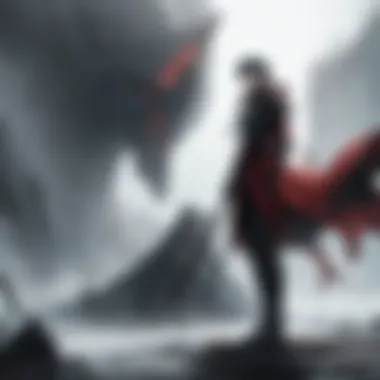
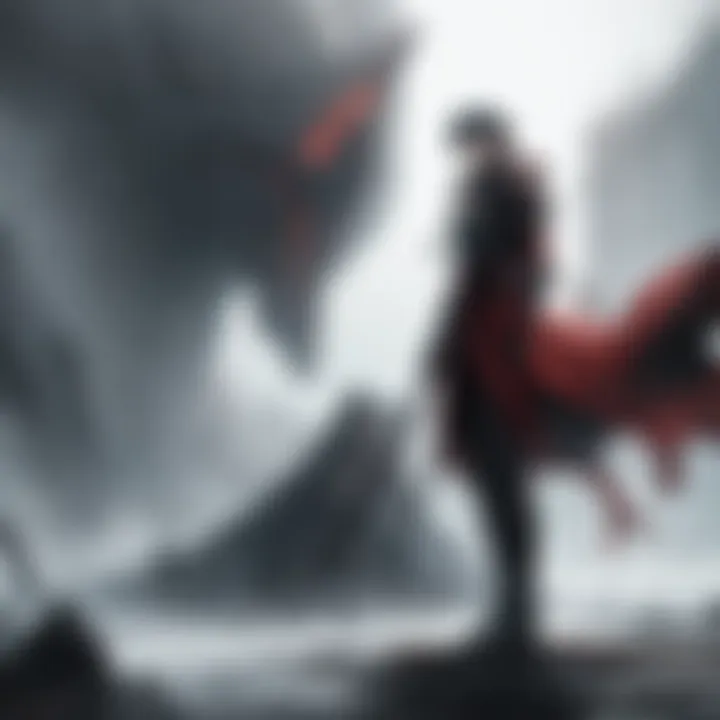
Beyond Miura and Otomo, several other artists have made their mark within the Berserk art realm, broadening the scope and depth of what visual storytelling can achieve. Artists like Hiroaki Samura, known for Blade of the Immortal, demonstrate how compelling character design can elevate narrative depth, presenting protagonists and antagonists that defy typical archetypes. Samura’s unique approach to movement and his use of negative space reframe viewers’ understanding of graphic storytelling.
Furthermore, the Pokemon creator, Satoshi Tajiri, indirectly influences darker narrative styles through his exploration of morality versus friendship within his creations. Interestingly, the nuances of moral dilemmas represent the complex human experience that Berserk encapsulates; the focus isn’t always on the battles won, but the price paid along the way.
"The true art of storytelling is capturing the essence of humanity within each brushstroke."
In summary, the contributions of these influential works and artists intertwine to form the vibrant, yet shadowy, landscape of Berserk art. The importance of their stories not only lies in their artistic merit but also in their capacity to forge emotional connections with audiences, provoking thought and evoking feeling in a manner that only the best art can achieve.
Stylistic Techniques in Berserk Art
The stylistic techniques employed in Berserk art serve not just as a means of expression but also as powerful tools that shape the narrative and impact the audience profoundly. Each stroke, every shadow, functions to create an atmosphere steeped in tension and complexity. Those who delve into Berserk's visuals know that the art is more than just decoration; it is interwoven with the very fabric of storytelling. Understanding the stylistic techniques can enhance the appreciation of its themes and messages.
Use of Shadows and Light
In Berserk, the interplay of shadows and light is nothing short of masterful. The dark themes of the narrative find resonance through the use of stark contrasts. Light often symbolizes hope, a glimmer of positivity amidst a sea of despair, while shadows envelop the characters, reflecting their struggles and inner turmoil. For instance, Guts, the protagonist, frequently emerges from darkness, his figure illuminated by harsh, almost blinding light, which underscores his daunting battles against both external foes and internal demons.
One of the most striking elements of this technique is how light guides the viewer's focus. Shadowy backgrounds can force attention on a character’s facial expressions or body language, creating a moment of vulnerability or rage. This method not only heightens emotional engagement but also frames the story's gritty reality; it often presents life in shades of gray, where good and evil are not simply black and white.
"Art is a reflection of life; Berserk captures the staggering beauty of shadow and the blinding pain of illumination in its visual storytelling."
Moreover, the use of shadows in combat scenes amplifies the intensity. The intricate play between light and shadow can enhance the tension, making each clash feel monumental. The talent behind Berserk stretches into how the darkness almost pulls its viewers into the narrative, allowing them to grapple with their own anxieties and fears through the visual form.
Line Work and Detail
Line work in Berserk is another hallmark of its artistic prowess. Each line is meticulously crafted, creating a rich tapestry of detail that draws the viewer in. Kentaro Miura, the creator, was known for his painstaking attention to detail—every sword, every scar on a character reflects the history and struggle engrained in the world he built.
The outlines in Berserk distinguish characters against their complex backgrounds, creating a vivid sense of action and emotion. By employing a combination of thin and thick lines, Miura provided depth and dimension. Thick lines may suggest strength or solidity, often around Guts which denotes his formidable presence, whereas finer lines may convey fragility or complexity, often seen with characters who bear emotional burdens.
Additionally, the level of detail in the artwork serves to immerse the audience in this dark fantasy realm. Backgrounds are not merely a canvas; they are filled with intricate elements—from ominous landscapes to grotesque structures—that pull readers deeper into the atmosphere of despair and struggle. This attention to detail establishes a palpable sense of place, which enhances the narrative.
In summation, the stylistic techniques in Berserk art, particularly the sophisticated use of shadows, light, line work, and detail, extend beyond mere aesthetics. They serve as vehicles to communicate deep themes and emotions, making this art form a profound experience, resonating with fans worldwide. The blending of these techniques is what keeps audiences returning, dissecting, and engaging with the breadth of Berserk, cementing its legacy in visual storytelling.
Cultural Impact of Berserk Art
Berserk art holds a significant place in the cultural landscape of anime and manga, transcending mere visuals to become a formidable vehicle for conveying complex themes such as despair, conflict, and humanity's resilience. The artwork, deeply imbued with emotion and meticulous detail, speaks to audiences on an introspective level, making its cultural impact profound and far-reaching.
The importance of Berserk art stretches beyond its aesthetic appeal; it encompasses shifts in narrative styles, character development, and thematic exploration within modern storytelling. The questions it poses about life and morality resonate widely, forging connections across cultures and generations. Let's delve deeper into the specific elements that highlight its influence and benefits.
Influence on Modern Manga and Anime
Berserk's influence on contemporary manga and anime is astoundingly palpable. Many artists and creators cite Kentaro Miura's work as a benchmark for artistry and storytelling. From the gritty tones to the finely crafted characters, the stylistic choices made in Berserk have inspired a host of modern narratives, especially in the dark fantasy genre. Notable examples include:
- Attack on Titan by Hajime Isayama, where the bleak atmospheres and relentless despair echo themes found in Berserk.
- Tokyo Ghoul by Sui Ishida, which similarly navigates the psychological torment of its characters amid devastating conflicts.
- Vinland Saga by Makoto Yukimura, displaying parallel deeper explorations of moral ambiguity and the fight for survival.
Moreover, the animation style of various adaptations has further adopted the shadow-drenched aesthetics that hark back to Berserk. Characters are not only portrayed with enhanced realism but also created with layers of emotion that draw viewers into their offering. The rawness exhibited in Berserk serves as a blueprint for artistic exploration in the medium, pushing the boundaries of what can be achieved narratively and visually—essentially redefining expectations for aspiring creators.
Global Reception and Legacy
The global reception of Berserk art unfolded as a reverberation across international borders, carving a substantial niche in various cultures. Critics and fans alike laud the series for its ambitious storytelling and unforgettable artistry, structuring a legacy that will likely persist for years to come.
- The art's dark themes, though unsettling, invite discourse surrounding existential questions and ideologies, drawing in readers from diverse backgrounds interested in such narratives.
- Its raw portrayal of violence and emotions resonates universally. Fans appreciate how Berserk does not shy away from depicting the sheer brutality of human existence, yet it also aims to explore the light that can emerge from such darkness.
- The cosplay community has embraced Berserk's characters, creating a vibrant subculture that celebrates its art and themes across conventions worldwide. From Guts' signature sword to Griffith's ethereal yet haunting visage, these representations breathe new life into the storytelling and keep the essence of Berserk alive.
Emotional Resonance in Berserk Art
The emotional layer embedded in Berserk art is not merely a backdrop; it serves as the heartbeat of the narrative, a potent force that hooks audiences and leaves an indelible mark on their consciousness. Understanding this emotional resonance is crucial to appreciating not just the artistry, but the very essence of the stories told within this realm. As viewers immerse themselves in the chaotic worlds of Berserk, they experience a spectrum of feelings: despair, hope, rage, and a yearning for redemption. These emotions act like strings of a musical score, each one playing a vital role in weaving together the rich tapestry of visual storytelling.
Connection with Audiences
When we speak of a connection, one must acknowledge that it isn’t a simple hook. It is a dance, fraught with intensity, where both the art and the audience bear their souls. The characters within Berserk showcase a staggering depth that resonates profoundly with those grappling with their own shadows. For instance, Guts, with his relentless struggle against fate, embodies pain and resilience that many find relatable. His journey is not isolated; it reflects a universal fight many endure.
This connection is nurtured through the symbolism embedded in the art. Shadows, while often ominous, also symbolize protection from vulnerability. In that respect, viewers do not just observe; they feel. It brings to mind the notion that art, especially of this kind, acts as a mirror, reflecting the darkest parts of ourselves while simultaneously providing a means of exploration and confrontation.
- Character Depth: Guts’ scars, both physical and emotional, resonate with anyone who has suffered.
- Atmospheric Elements: The use of dark tonal colors contributes to a sense of gravitas, inviting the audience to sit with their discomfort rather than shying away.
- Raw Emotion: For many fans, the emotional weight of scenes is palpable, creating catharsis that encourages exploration of their personal struggles in tandem with the characters’ journeys.
Impact of Narrative on Visual Emotion
The intertwining of narrative and visual artistry in Berserk creates a unique emotional landscape that is hard to ignore. It’s not just the tale that unfolds, but how it unfolds that grips the viewer. The pacing, the choice of moments to linger upon, and the intensity of the visual style bolster the emotional impact. For instance, a quiet scene that centers on Guts’ expression carries as much weight as a grand battle.
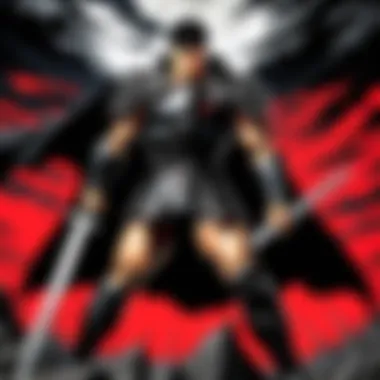
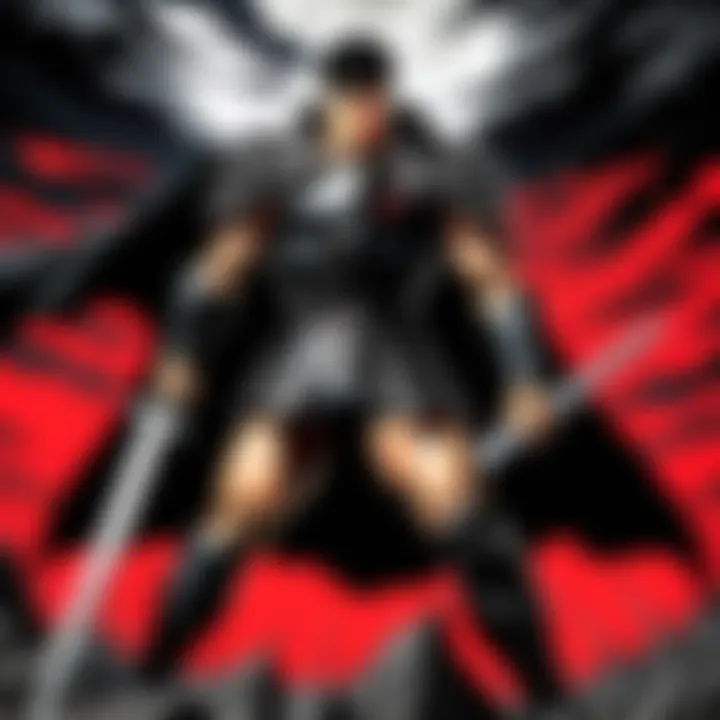
"The narrative is akin to a river; it shapes the landscape of emotional experience, carving deep valleys of sorrow and cliffs of hope in the minds of its audience."
Visual storytelling strikes when done right; every frame can evoke feelings that words alone may fail to capture. Think about scenes where silence reigns, yet the tension hangs thick in the air. This drastic play between noise and silence enhances the viewer’s experience, dragging them into the depths of the character’s emotions.
- Visual Symbolism: Elements such as the Brand of Sacrifice hold multilayered meanings, resonating with themes of betrayal and futility.
- Climactic Arcs: The narrative structure builds tension that spills over into visuals, creating urgency that evokes fear or empathy depending on the moment.
- Complex Character Dynamics: Relationships fraught with tension, such as that between Guts and Griffith, elevate the stakes emotionally, ensuring that each glance shared carries the weight of backstory and conflict.
Philosophical Undertones in Berserk Art
The exploration of philosophical undertones within Berserk art enriches the experience and understanding of this visual storytelling form. At its core, Berserk embodies deep reflections on existence, morality, and the human condition. Through its intricate narratives and visual representation, it beckons the audience to confront unsettling truths and questions, elevating the storytelling from mere entertainment to profound philosophical inquiry.
Existentialism and Nihilism
Berserk is a canvas where existentialism and nihilism clash and intertwine, casting a shadow over its characters and events. The existential theme primarily revolves around the individual’s struggle to find meaning in a chaotic world. This resonates strongly with the character of Guts, who navigates through a bleak reality filled with suffering and despair. His journey becomes a battle not just against external foes, but also against the heavy burden of existence itself.
The darkness surrounding Guts reflects nihilistic undertones, as it suggests a reality devoid of inherent meaning. In various scenes, the struggle between life and death plays out in stark ways, prompting audiences to ponder the significance of their own existence. Guts’ relentless fight against fate and his efforts to carve out personal significance offer a mirror to our own existential queries. This theme is not merely a backdrop but a catalyst for deeper reflection on human agency, choice, and the quest for purpose.
"Each battle fought by Guts serves as a metaphor for the struggle against the void that threatens to engulf us all."
Berserk dives into the depths of despair, yet it also showcases resilience in the face of that despair. In this tapestry, readers find themselves contemplating their own beliefs about fate, agency, and the nature of existence. Whether grappling with the bleakness of life or the hope that flickers in moments of connection, the philosophical undertones offer a rich layer of meaning, inviting debates and discussions among fans and scholars alike.
The Nature of Evil and Conflict
The idea of evil within Berserk is complex and multifaceted. The series does not offer simple dichotomies of good versus evil; rather, it presents evil as an intrinsic part of the human experience, woven into the very fabric of existence. Characters such as Griffith embody ambition, but this ambition often comes at a disastrous moral cost. In his rise to power, the series scrutinizes what makes someone truly evil, urging the audience to reflect on the gray areas of morality.
Conflict in Berserk thus becomes an exploration of this nature of evil. The battles are not only physical confrontations but also moral and philosophical ones. The very act of fighting is imbued with questions about purpose, justice, and the consequences of one's actions. This brings to light the intrinsic struggle humans face with their darker impulses and the moral ambiguity that often accompanies choice.
Berserk's ability to provoke inquiry into the nature of evil and human conflict underscores its significance in the realm of art. It prompts reflections not only within the context of the narrative but also allows readers to examine their own perceptions of right and wrong in a world where absolutes are rarely found. In examining these philosophical stakes, Berserk art stands as both a mirror and a challenge, compelling its audience to ponder, reflect, and engage with the darkest aspects of existence.
Future Directions in Berserk Art
The landscape of Berserk art is at a pivotal juncture, where new techniques, emerging artists, and evolving technologies are set to redefine its boundaries. Understanding these future directions is essential for both enthusiasts and creators alike. The questions of how this genre can adapt and grow while preserving its core themes of darkness and human struggle become more relevant than ever. By delving into these emerging trends, we can gain a clearer picture of how Berserk art will continue to resonate within the anime and manga community.
Emerging Artists and Styles
New voices are beginning to rise within the Berserk art sphere. These artists are not just borrowing from what has been established; they are experimenting boldly with their unique interpretations. For instance, digital artists have risen to prominence, using platforms like DeviantArt and even Instagram to showcase innovative styles that mesh traditional darkness with modern aesthetics. Works that I’ve come across often display an interesting blend of surrealism and detailed realism, pushing Berserk’s thematic elements to new heights.
Notable examples include creators like Kenshi Yonezu who have tapped into the emotionality that fuels Berserk's storytelling. Their character designs sometimes veer into abstract territories while still retaining identifiable traits from the original series. Furthermore, the influence of popular culture can be spotted in their galleries, pulling in elements from various genres. This cross-pollination could lead to a renaissance of sorts, bringing in fresh perspectives that resonate with a broader audience.
Art collectives online also mirror this shift—a place where up-and-coming talents can collaborate, share techniques, and foster a community that pushes the envelope. As these new styles emerge, they pay homage to legends like Kentaro Miura while simultaneously charting new artistic territory that could influence future Berserk-related works.
Technological Advancements in Art Creation
The advancements of technology are providing artists with tools that allow for a hitherto unseen exploration of Berserk's vast themes. Tools like digital painting software, 3D modeling, and AI-driven illustrations are transforming the way art is created and experienced. For example, software such as Procreate and Clip Studio Paint has garnered massive attention for their user-friendly interfaces and advanced features, making it easier for artists to express their visions.
Moreover, the use of augmented reality (AR) and virtual reality (VR) technology invites a whole new dimension for engaging with Berserk art. Imagine stepping into an immersive environment that draws you into Guts’ turbulent world. The ability to 'walk through' art pieces or interact with characters can redefine storytelling, offering a breath of fresh air to existing narratives.
Also, the rise of NFT art markets presents unique opportunities for artists, enabling them to monetize their work in unprecedented ways. By creating digital artworks and selling them as unique tokens, artists can gain recognition while maintaining ownership of their creations. This not only diversifies the audience but also allows for innovative storytelling techniques that harness the capabilities of blockchain technology.
In sum, the future of Berserk art is teeming with potential. With emerging artists eager to explore and innovate, and technological advancements paving the way, the possibilities are extensive.
"Art is a journey through emotional landscapes; it's evolving, much like the stories we tell."
For those interested in keeping up with these changes, platforms like Reddit or Facebook offer communities where creators and admirers can exchange ideas and experiences.
End
In wrapping up our expedition through the rich tapestry of berserk art, it becomes clear that this genre transcends mere visual aesthetics. The intricate details and raw emotional weight packed into each panel resonate deeply, leaving an indelible mark on the hearts of its audience. Understanding this significance not only brings appreciation to the art itself but also connects us to the broader themes of humanity, suffering, and resilience that the narrative encapsulates.
Summarizing the Significance of Berserk Art
Berserk art serves as a potent vehicle for exploring complex themes like despair and hope, often intertwining within the same frame. It invites us to confront the shadows lurking in both the world and within ourselves. In a broader artistic discourse, the raw, jagged lines paired with stark contrasts of light and dark form not just stunning visuals but poignant storytelling devices.
- Themes of Darkness and Humanity: Through the portrayal of intense struggles, the art illustrates the often-grim reality of human existence, forcing a confrontation with discomforting truths.
- Psychological Depth: Artists like Kentaro Miura used their brushes to delve into the psyche, reflecting on good versus evil, ultimately offering a sense of catharsis for readers grappling with their own inner demons.
- Cultural Impact: As our discussion highlights, the influence of berserk art ripples across borders, inspiring contemporary creators and audiences worldwide.
Thus, this art form emerges as critical not merely for its breathtaking visuals but for its robust narrative that compels reflection and introspection.
Continuing the Discussion Within the Community
The conversations sparked by berserk art do not end after experiencing the work itself. They ripple through forums, art conventions, and social media, creating a dynamic community of enthusiasts and creators alike.
- Platforms for Dialogue: Places like reddit.com and various social media outlets allow fans to exchange interpretations, analyze character arcs, and resonate over shared emotional experiences.
- Original Artwork and Fan Creations: Emerging artists draw inspiration from berserk art's visual grammar, cultivating new styles while paying homage to their predecessors. The DIY ethos encourages creativity and a deeper understanding of the themes explored within the original works.
- Legacy in Current Trends: The community not only maintains the discussion around historical perspectives but also propels berserk art's relevance. As new technology and storytelling methods evolve, fans continually adapt and reinvent how they perceive and engage with existent works.
Engaging in these conversations enriches our understanding and appreciation of berserk art's layered meanings and its expansive influence across cultures. In essence, it is a living dialogue that reflects our collective experiences and aspirations, an exploration that is ever-evolving.







